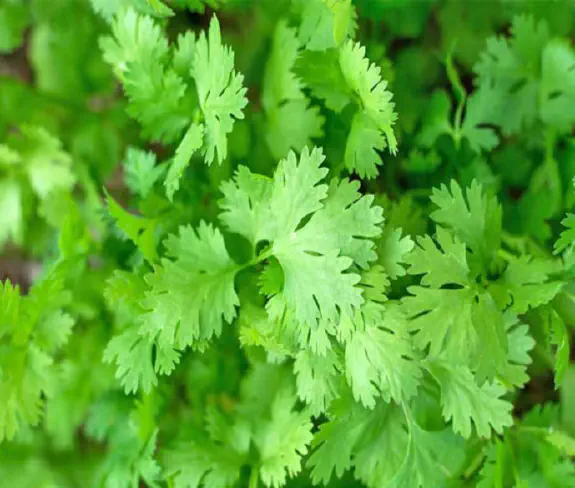Coriander is another member of the group of common medicinal herbs used mainly to manage the long-term problems of IBS. It is a useful herb to use for symptoms such as bloating, gas and nausea. It is also used to treat athletes foot. While research, as with most herbs, remains in short supply, coriander has the respect of many herbal and Ayurvedic practitioners. Like most herbs with a bit of TLC, you can grow your own at home. We know the ancient Egyptians, around 1550 BC, used coriander. It also had its place in Indian, Chinese & Roman history as a medicine and for cooking.
Healthy Coriander
Coriander, also known as Chinese parsley and cilantro, can be grown indoors and out. it grows well with anise, dill and parsley. Coriander loves soil that is well-drained with full sun and maybe a little shade in summer. Seeds can be sown from June in the pre-prepared soil. Or you can sow the seeds in general compost in pots from April.
Be aware germination can be slow, so patience is needed. But you can try crushing them slightly before sowing. Coriander needs watering regularly; you can harvest as wanted. To keep the leaves and sees plentiful, sow more seeds every 2 weeks. You can continue to sow seeds until late autumn for a supply in early winter. Coriander freezes well, and don’t forget you can also use the seeds in cooking or your next planting.
Drying Coriander Seeds
It would be remiss of this coriander planting guide, not to mention that coriander seedlings are popular with snails and slugs, so don’t forget to protect them. To preserve your seeds, allow some of the plants to produce flowers. After the seeds appear, pull the plant up. You then need to and put the flower heads into a paper bag. Put this upside down to dry out. When dry, shake the seeds loose into the bag—store in a container, away from sunlight and airtight. Use crushed or whole in cooking or replant.
